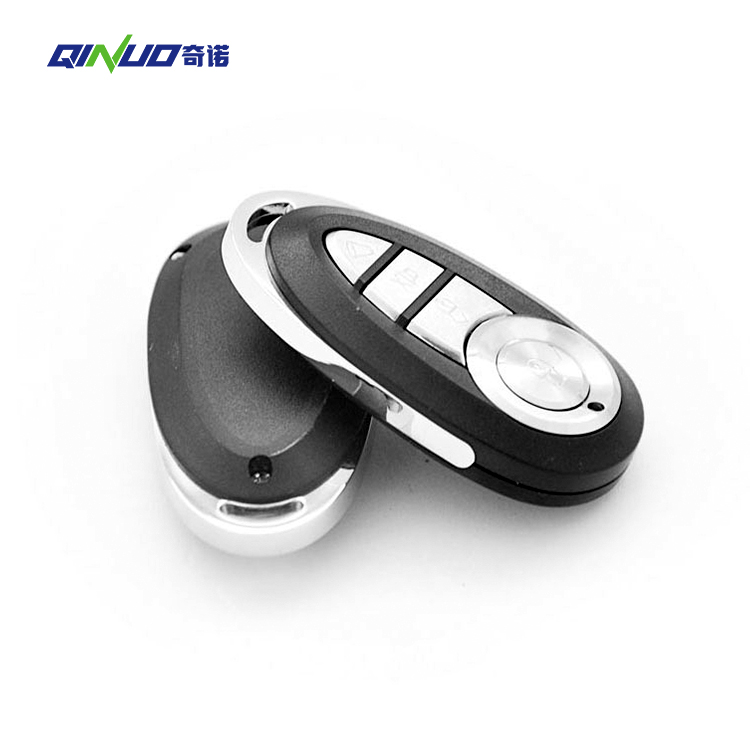A rolling code garage door remote offers enhanced security by changing the code each time the remote is used. However, like any electronic device, it can encounter issues. If your rolling code garage door remote is not working properly, there are several steps you can take to troubleshoot and potentially resolve the problem. Here’s a comprehensive guide to help you identify and fix common issues with your rolling code garage door remote.

Step 1: Check the Basics
1. Battery Check:
The most common reason for a non-functioning remote is a dead or weak battery. Open the remote and replace the battery with a fresh one, ensuring it is properly seated.
2. Remote Range:
Ensure you are within the effective range of the garage door opener. Rolling code remotes typically have a limited range, so try moving closer to the garage door to see if it responds.
3. Obstructions:
Check for any obstructions between the remote and the garage door opener’s receiver. Objects, walls, or electronic interference can affect signal transmission.
Step 2: Inspect the Remote
1. Physical Damage:
Inspect the remote for any visible signs of damage such as cracks, water damage, or broken buttons. Physical damage can impair the remote’s functionality.
2. Clean the Remote:
Dust and debris can accumulate in the remote's buttons and contacts. Gently clean the remote with a soft cloth and consider using a can of compressed air to clear out any debris.
Step 3: Reprogram the Remote
1. Reset the Remote:
Sometimes, the remote can lose its connection with the garage door opener. Consult your garage door opener’s manual for instructions on how to reset and reprogram the remote.
2. Reprogram Steps:
Typically, reprogramming involves pressing a “Learn” or “Program” button on the garage door opener unit, then pressing a button on the remote. Follow the specific steps outlined in your garage door opener’s manual.
Step 4: Check the Garage Door Opener
1. Power Supply:
Ensure the garage door opener unit is properly powered. Check the power cord and make sure it is plugged in securely. If there’s a power outage, the opener won’t function.
2. Manual Operation:
Test the garage door by operating it manually. If the door doesn’t open or close smoothly, there may be an issue with the door’s mechanism rather than the remote.
3. Antenna Position:
Check the position of the garage door opener’s antenna. The antenna should be hanging down and unobstructed to receive the remote’s signal effectively.
Step 5: Update Firmware and Check for Interference
1. Firmware Updates:
Some modern garage door openers have firmware that can be updated. Check the manufacturer’s website or manual for any available updates and instructions on how to apply them.
2. Electronic Interference:
Other electronic devices in your home can cause interference. Try turning off nearby devices such as Wi-Fi routers, cordless phones, or baby monitors to see if the remote starts working.
Step 6: Contact Support or Replace the Remote
1. Manufacturer Support:
If you’ve tried all the above steps and the remote still isn’t working, contact the manufacturer’s customer support for further assistance. They may provide additional troubleshooting steps or determine if the remote needs repair or replacement.
2. Remote Replacement:
If the remote is faulty and cannot be repaired, consider purchasing a replacement remote. Ensure the new remote is compatible with your specific garage door opener model and supports rolling code technology.
Conclusion
Troubleshooting a rolling code garage door remote involves a systematic approach, starting with basic checks and progressing to more detailed inspections and reprogramming steps. By following this guide, you can often identify and resolve the issue, restoring the functionality of your garage door remote. If all else fails, don’t hesitate to seek professional help or replace the remote to ensure your garage door operates smoothly and securely.

-
Office ViewQinuo Electronics Co., Ltd.was founded in 2009,it is a high-tech company that integrated R & D, manufacturing, sales and service for 15 years,which is mainly specialized in providing sensors of automatic door, control system of door and gate, car key remote, auto parts etc. The company currently has four independent brands: U-CONTROL, U-SENSORS, U-AUTOGATES and U-AUTOKEYS.
-
got questions? call us
+86 13960286508
-
fax :
+86 595 22901208 -
Email :
[email protected]
-
address
- No.991 Xingxiu Road,Taiwanese Investment Zone, Quanzhou, Fujian Province,P.R.China











